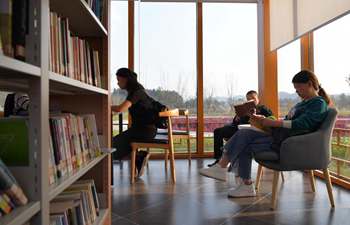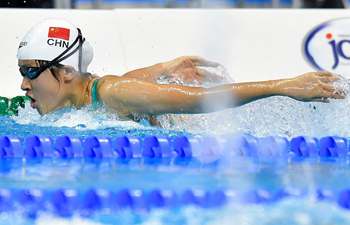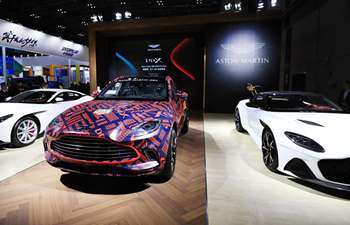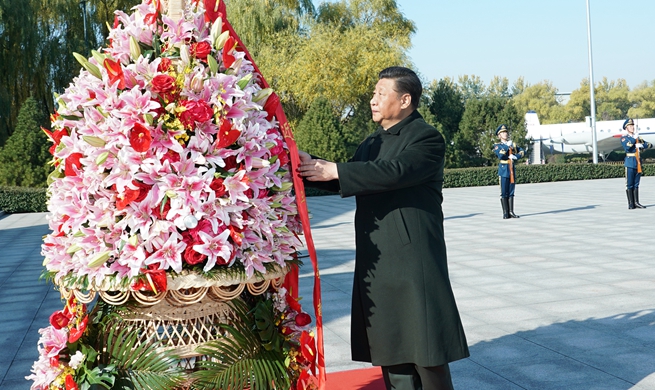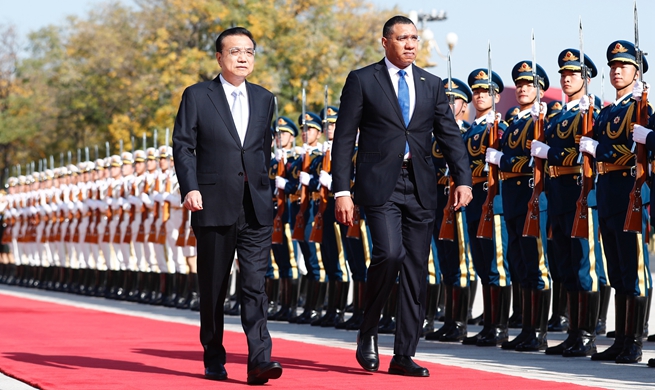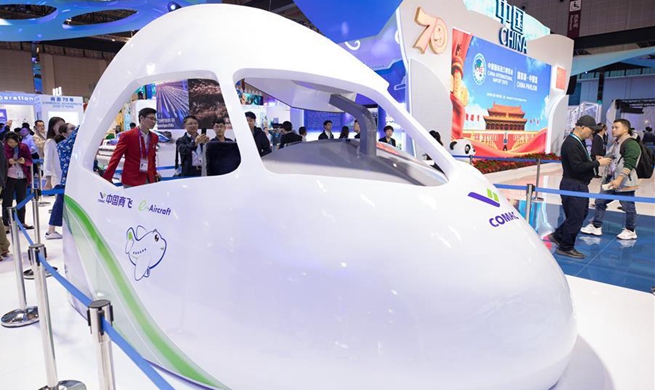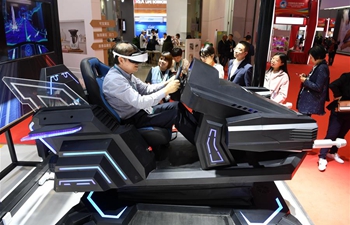by Xinhua writers Chu Yi and He Xiyue
SHANGHAI, Nov. 9 (Xinhua) -- As a large number of elderly citizens are unable to take a bath due to reduced mobility or illness, Yang Meng declares he has a solution.
Yang, from OG Wellness, a leading Japanese manufacturer of rehabilitation equipment, is demonstrating a wheelchair-accessible bath system to lines of visitors at the ongoing second China International Import Expo (CIIE) that opened Tuesday in Shanghai.
"One side of our bathtub is a removable seat with wheelchair mobility. A wheelchair can dock smoothly with the tub that is designed with a 61 cm opening," said Yang, chief representative of the China office of OG Wellness.
"After the docking, the bather can enjoy expanded legroom allowing comfortable bathing for persons up to 1.8 meters tall," Yang said.
On his maiden trip to the CIIE, Yang is surprised by the event's popularity. "We serve at least 1,000 visitors a day."
At the company's booth, an eye-catching waterbed massager is also on display.
"The two high-tech products can help the elderly enjoy baths, massages and other recreational activities. We want to introduce them to more Chinese customers through the platform of the CIIE and further develop our products based on the needs of the Chinese market," he said.
Including OG Wellness, Japanese companies brought new concepts of caring for the elderly to the expo, dedicated to providing more choices for the aging group in China.
Panasonic's barrier-free villa, which made its China debut at the expo, brings thoughtful services and amenities, with lights that automatically adjust themselves according to lighting conditions. It is also equipped with movable beds for the convenience of those with reduced mobility.
"Our high-tech products can assist the aged to enjoy a happy and independent life in their twilight years," said Japanese architect Shuhei Aoyama. "This concept of elderly care will be more popular in the future in China."
The number of people aged 60 and above in China was 249.49 million at the end of 2018, accounting for 17.9 percent of the total population, according to the National Bureau of Statistics.
"Both China and Japan face aging problems. We have been working with local Chinese companies to introduce Panasonic's experience in building smart cities in Japan to the Chinese market, hoping to provide new solutions to the health and elderly care problems," said Tetsuro Homma, CEO of China & Northeast Asia Company, Panasonic Corporation.
At the expo, the needs from the Chinese market have also offered Japanese exhibitors new inspirations to upgrade their products.
"China has taken a step further in the popularization of information technology, with its market more open to new technologies," said Yin Haishu, international division chief of TANOTECH, a Japanese technology company focusing on rehabilitation equipment.
"When new versions of our products become successful in the Chinese market, we will relay this information to our Japanese team and upgrade our products accordingly," she said.




